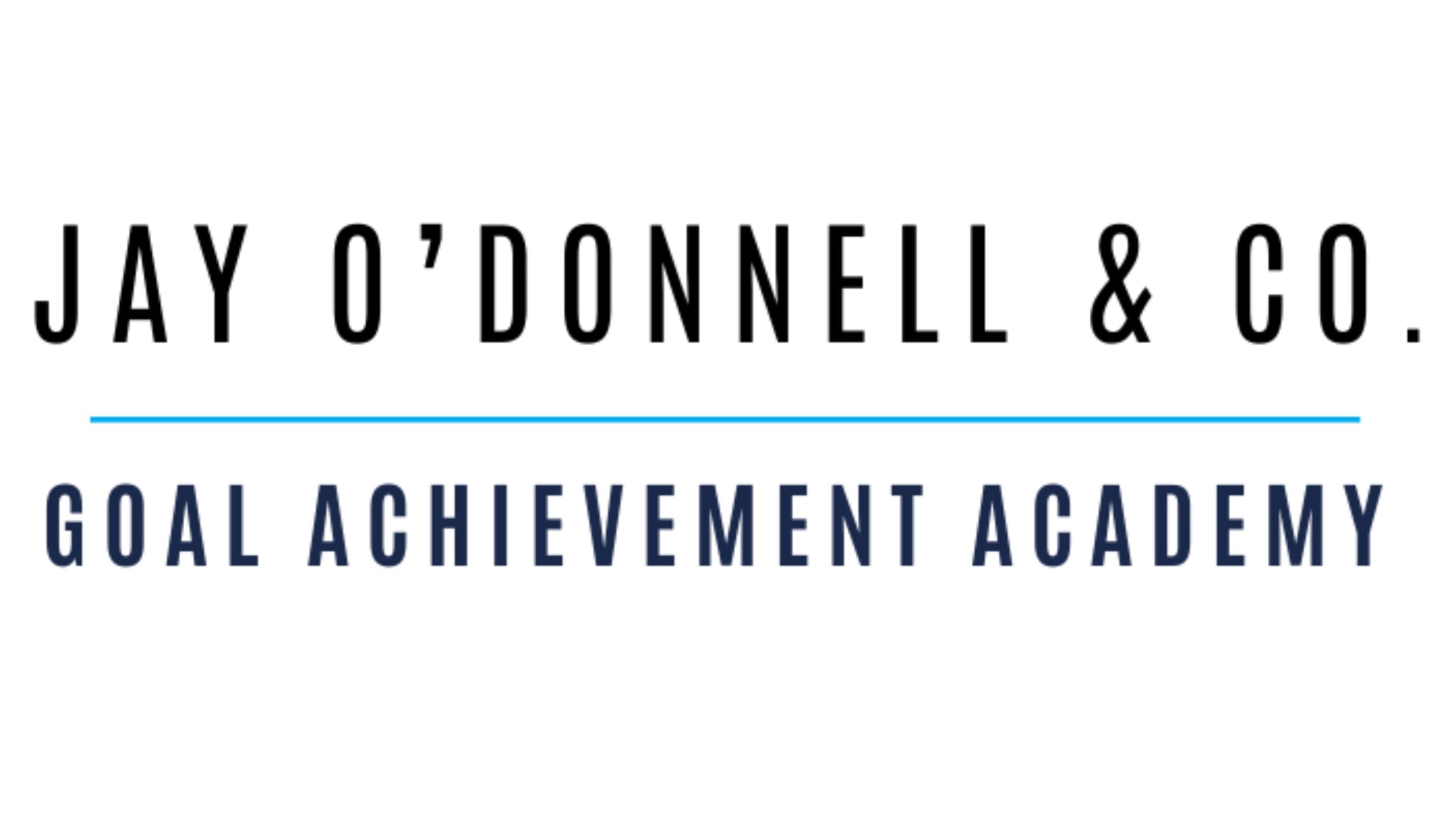How to plan my day.
When it comes to goal setting and success, one of the most crucial and foundational parts is the planning of one’s day.
I’m a firm believer in writing down your goals every single day.
This includes not only your long-term goals, but also your short-term goals and daily tasks as well.
Planning each and every day gives you a tremendous advantage in accomplishing more, being more successful, and just in general turning your dreams into goals, and then accomplishing those goals to help you create the life you desire.
With that being said, it isn’t always so easy to figure out exactly how to plan out your day.
Most people have an intuitive idea of what this looks like.
But to be fair, practicing this on a daily basis, as a habit, isn’t always so easy.
In my experience, people tend to do a lot better with it when they have a little bit of guidance and help getting started.
So in this post, you’re going to learn everything you need to know to answer the question:
How to plan my day to maximize productivity and success.
Decide How You’re Going To Write Down Your Plan For The Day
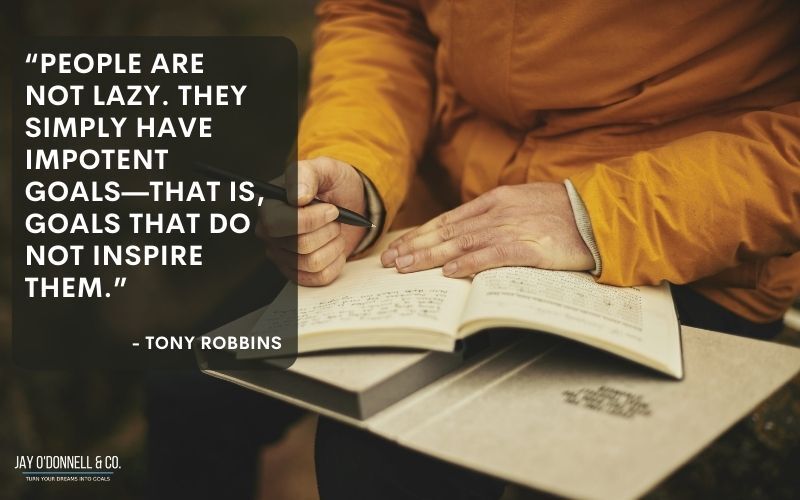
There are numerous different ways to go about this process.
Not only are there different techniques to choose from, but there are also different mediums that you can use to record your goals.
Let’s take a minute and go through some of the more popular mediums for goal setting, and answer the question:
Where should you write down your goals?
A Notebook Or Bullet Journal
You can create awesome to-do lists using nothing more than a simple notebook or bullet journal.
In fact, I’ve created an in-depth guide on how to do this here.
The great thing about a notebook is that they’re easy to get, inexpensive to buy, and extremely creatively open.
The only real downside is that they don’t come with any guidance ‘pre-installed.’
Printable Goal-Setting Sheets
Goal setting sheets are basically sheets that you print out and then fill out to create your daily to-do lists.
The great thing about these types of sheets is that there are literally 1000s of them available for free online.
- They can provide you with a bunch of guidance.
- They barely cost anything.
- They’re an awesome tool to use to get started on the process.
The only real downside is that printing out all of those sheets can leave you with a bunch of loose papers laying around—so if you’re going to stick with this method long-term, it’s probably in your best interest to get yourself a file so that you can file them away.
Need some printable options to start with?
Download my weekly goal-setting sheet, print out a few, and give it a try.
You can also sign up for my email list to get a free copy of my Goal Setting Essentials Starter Kit, which contains 4 different types of sheets, as well as 2 ebooks to help you get started and crush it on your goal-setting journey.
A Daily Goal Planner
Many successful people utilize goal planners to help them plan their days and manage their to-do lists.
If you’re thinking about purchasing a goal planner, check out this guide that I published on the best goal planners available.
It contains all of my favorite planners for specific purposes, and it may help you to find a planner that works well for you.
You Don’t Need A Fancy Planner To Get Started
Listen, I love planners.
I’ve used the Self Journal, the Full Focus Planner, and many others.
There are all kinds of advantages to using planners to plan out your day and write down your goals.
With that being said, I’m also a firm believer in the fact that you don’t need a fancy or dedicated planner to start your goal-setting journey, or even to start planning your days.
You can start right now with what you have on hand.
This could be a blank notebook, blank sheets of paper, printable sheets, or even the back of an envelope or napkin.
Remember that regardless of how you start, you can always adapt and try new things later.
The most important thing is to get started today.
When you write down your plans for the day, record your to-do lists, and write your goals down on a daily basis, you create a massive advantage for yourself.
You give yourself a huge push forward on the path toward success.
I really applaud you for taking this step—and it’s important for you to know that how you choose to write down your goals and where you choose to write them is much less important than just getting started and committing to it on a daily basis (though eventually, you’ll want to get into the habit of writing down your goals using the SMART goals format).
That’s really where the magic happens.
All right, let’s jump back into these instructions.
Start With A Daily Goals List
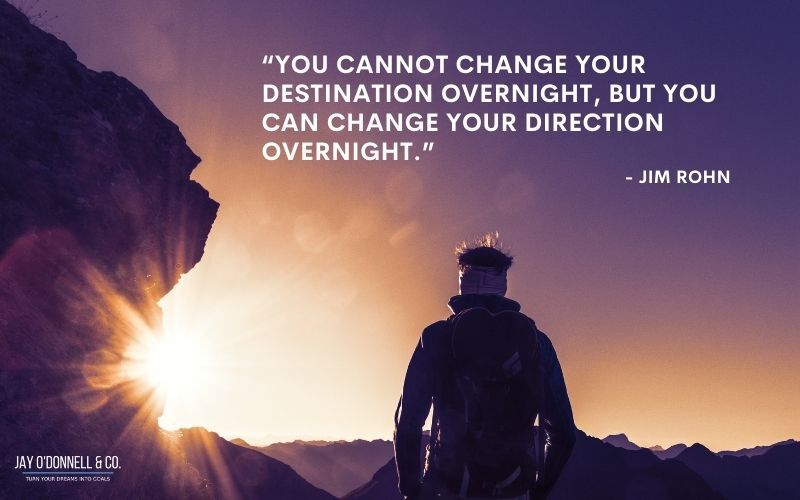
At first, when you’re asking:
“How to plan my day…”
You may be a little bit overwhelmed with all the possibilities.
Sometimes, this causes people to get a little bit discouraged—and it may even cause them not to start.
But there’s an easy solution to this process.
Just start simple.
It doesn’t have to be perfect or fancy.
Personally, I feel that the best way to start is with a simple daily goals list.
This can include important tasks you need to complete during the day, appointments, and anything else that you find relevant or pertinent.
You may only write down 3 or 4 things on this list at first, and that’s totally fine.
Just get started in a manner that makes you feel comfortable.
You can always get fancier and more sophisticated later on, after you get some practice and gain more confidence.
Write Down Your Daily Goals List, Along With Your Long Term Goal, Every Morning

This is where the habit part comes in.
If you’re looking for an answer to the question of “how to plan my day to maximize productivity and success,” then it’s crucially important to address what is probably the most important part of this whole process…
Staying consistent with the habit.
There’s a tremendous amount of power in writing down your goals and to-do lists.
However, one of the most important and fundamental parts of this is that you make sure to do it every single morning.
If you can get into this daily goal-setting habit on a regular basis, it literally has the power to transform your life.
But all too often, people get started and then they quit.
Or, they start off strong—and then their focus or attention wavers, and they stop doing it.
Make sure to stick with it.
Pro Tip: Challenge yourself to write down your goals every morning for 10 days in a row to get started.
Then, just watch how much more structured and organized your life becomes, and how much more productive and successful YOU become as well.
As You Build Your Daily Goals List, Take Your Medium And Long-Term Goals Into Account
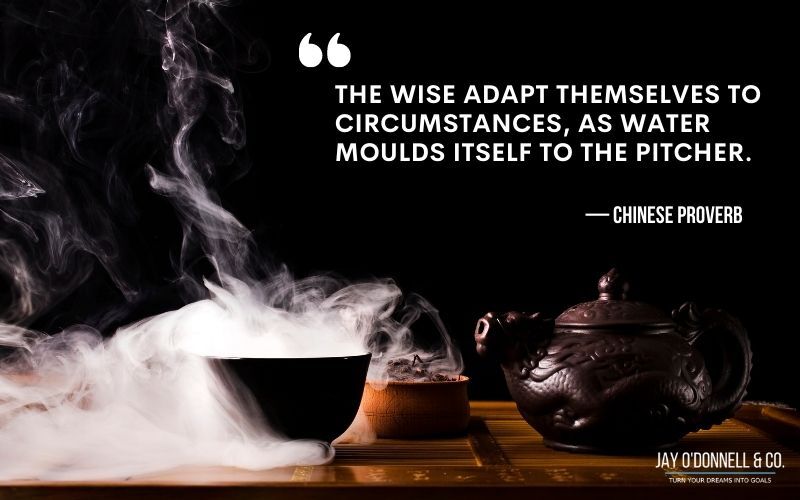
When writing down your daily to-do list, it’s important to try to keep your long-term and medium-term goals in mind.
The daily goals (or short-term goals) is the stuff you’re going to accomplish today.
However, it’s also in your best interest to make sure that at least some of your short-term goals reflect the pursuit of your medium and long-term goals.
For example, if you have a long-term goal of losing 10 pounds, getting into better shape, and increasing your fitness… then you may want to reflect that in your daily goals by scheduling yourself a 20-minute walk or jog on a daily basis.
See, writing down your short-term goals gives you a unique opportunity to break your long-term goals down into medium and short-term goals.
This empowers you to spread the effort out over longer spans of time, and accomplish it little by little—in achievable steps.
This is such a powerful concept.
And when you’re learning to answer the question ‘how to plan my day,’ this is exactly the skill that you’re going to want to learn so that your daily goals will help to contribute to you planning out the future you want for yourself.
Break Down Your Goals Into Manageable Daily Tasks
One of the foundational principles of goal setting theory is to break larger goals down into smaller, more achievable milestones.
A lot of people get overwhelmed by big goals, and then abandon them.
But you can avoid this by taking the bigger goals that you wish to accomplish and breaking them down into smaller, more achievable milestones.
For example:
Maybe you want to save up for a new car.
Well, this is a big goal.
If you try to come up with a lump sum of money big enough to buy the car all at once—that’s probably going to be a lot more challenging than if you were to break that goal down into smaller, more achievable goals, and set aside a little bit of money from every paycheck over a longer period of time to see how much more achievable such a big goal is when you break it down and take it step by step.
This is the power of short-term daily goal setting.
Prioritize Your Tasks
Prioritizing your tasks is a pretty important part of planning your day.
In other words, you want to use some kind of tactic or strategy to help you figure out which tasks you should prioritize first, and which ones you can schedule at a later time if needed.
This really plays into the strategies of being more productive on a daily basis.
Here are a few strategies that you could deploy as you write down your daily tasks and prioritize them as needed.
Prioritize 1 To 3 Of The Most Important Tasks
This is a classic concept in many goal planners.
For example:
The Full Focus Planner uses a version of this technique.
Basically, you choose 1 to 3 tasks that are truly the most important tasks to complete during the day.
These tasks should receive priority attention until they’re complete.
After that, you can move on to the smaller and ‘less important’ tasks that you’ve scheduled throughout the day.
The 3 ‘priority tasks’ are things that must get done today.
They can’t be put off till tomorrow.
Other tasks, however, could possibly be rescheduled if you don’t have time for them.
This gives you the power to choose your priorities and accomplish them on a daily basis—helping you to move forward in life, and also to feel good about your performance during the day.
Create A Simple To-Do List
Sometimes, when you’re asking yourself the question, “how to plan my day for maximum productivity and success,” you’re going to find that the simple answer is usually the better one.
A simple to-do list is sometimes the best way to write down your daily tasks and goals.
This is very straightforward.
Just write down the stuff you want to get done that day.
If something doesn’t get done, delegate it to the next day and move on.
Eat That Frog
This is a concept that basically means to do the most difficult thing first every single morning.
Everyone has tasks that probably seem ‘less fun’ than other tasks. If you prioritize the easier, funner tasks first—leaving the more difficult tasks for later—those difficult tasks (which are probably still very important) may not end up getting done.
Hence the concept of eating that frog.
When you schedule your most difficult, demanding task first, you basically set yourself up for victory right from the start by tackling your biggest, hardest goal, and then working downwards toward your funner, less demanding goals.
This will not only reward your brain with amazing success chemicals—but it will also help you to snowball your day and get even more accomplished.
Plus, it reserves that peak morning energy for your biggest, baddest challenge.
The Pomodoro Technique
There’s a lot of history to this technique.
But basically, it goes like this.
You set yourself blocks of time for intense focus, work, or study.
These blocks of time are called pomodoros.
They’re typically 25 minutes each. After each one, you take a quick 5-minute break.
After 5 pomodoros, you’ll take an extended 20-minute break—then repeat as needed.
How To Use Pomodoros To Help You Plan Your Day
First, for each task, you assign a certain number of pomodoros to complete it.
So for example, maybe one of your tasks is to clean the house.
You think to yourself:
“It’ll take about an hour of intense focus to perform this task,” so you assign it 2 pomodoros.
Once you complete the first one, you’ll take a five-minute break and check it off your list.
Then you get back to work. Once you complete the second one, you’ll take another five-minute break and check that one off your list.
After that, the task is done.
Even if you didn’t technically clean the house to 100% perfect standards, the fact that you’ve completed the pomodoros assigned to it means that you are now marking the task as complete.
This technique tends to work really well for people who enjoy working in short, controlled bursts—but it’s also great for people who benefit from breaks in between their short, focused stints of work.
Time Blocking
This is basically a more advanced version of a simple to-do list.
With this technique, you write down all of the things you need to accomplish that day.
Then, you ‘time block’ them to give them an assigned place in your daily schedule.
So, for example, you may schedule your morning meeting from 7:00 am to 7:30 am.
Then, allowing for the usual 30 minutes for a break and to get back to your office, you know that you’re going to be responding to client emails from 8:00 am until 9:30 am, so you block that time off as specified—and so on.
Using this method, you can plan out your day and plan ahead to see how much time you’ll have to get different things accomplished.
And of course, you can prioritize as needed.
The beauty of this method is that it helps you to stay on track with your plan, and keeps you from wasting time in between tasks.
But it also helps you to look forward to what you’re going to need to do that day, which can help you to mentally prepare and to stay present and focused in the moment.
Refer Back To Your Daily Goal Plan Regularly
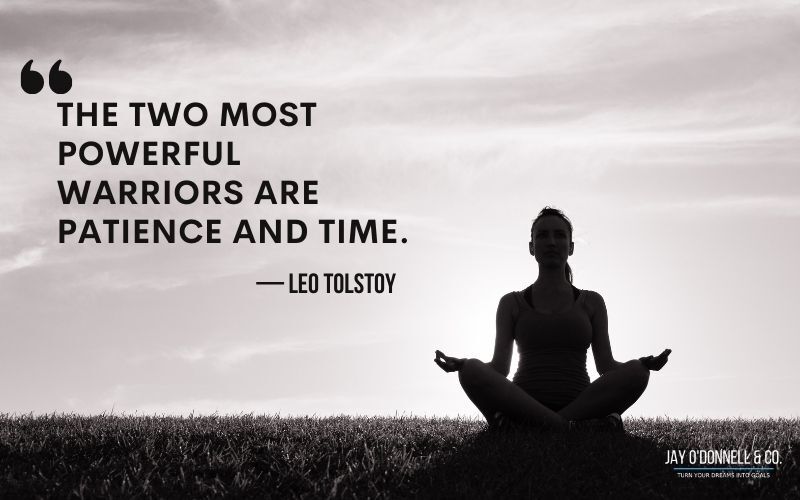
Whenever you start setting goals for yourself, it’s important to refer back to your schedule throughout the day.
This is important for several different reasons.
- First of all, it will help to keep you focused.
- Secondly, it will help to keep you motivated—because you’ll be checking things off of your list.
- Thirdly, it’ll empower you to see exactly how your days tend to go, so that you can adapt your goal setting and make it even more accurate the next day.
These are all powerful shifts that can help you to make your days that much more successful.
Check Items Off As You Complete Them
This is such an important part of the process.
Whenever you complete an item on your daily plan, make sure to check it off the list. This is important for many different reasons.
First of all, the simple act of accomplishing a task and checking it off your list rewards your brain with awesome feel-good chemicals.
And this will help to motivate you and make you happier.
Secondly, you deserve to check things off your list as you accomplish them – to celebrate your victories, and to pat yourself on the back.
It isn’t easy to check items off of a to-do list.
It isn’t easy to accomplish your daily goal list.
So as you get it done, reward yourself.
This is so important.
Stick With It, And Don’t Give Up
Here’s the thing.
Writing down your daily goals and making a plan for your day is challenging.
At first, it’s exciting and makes you feel great about the fact that you’re taking control of your schedule.
However, over time, it can threaten to become mundane, overwhelming, or even downright inconvenient.
And you may be tempted to quit.
But here’s the most important tip of all.
Stick with it.
Don’t give up.
If you’re asking yourself how to plan my day to maximize productivity and success, then it’s obvious that you’re looking for a life characterized by a greater sense of purpose, meaning, and accomplishment.
This is amazing.
You deserve to experience this kind of success.
But if you don’t stick with the daily process of writing down your plan, you’re going to lose out on some of the amazing benefits that it has to offer.
And you deserve more than that.
So make sure to stick with it, and don’t give up.
Conclusion
Hopefully, this post has given you some useful information that’ll help you with the question of ‘how to plan my day,’ and how this can help you in your goal-setting and life-success journey.
Of course, at the end of the day, this is just another part of the larger, overarching process of turning your dreams into goals, and writing those goals down to create a roadmap for success in your life.
This is how you begin your journey to success and crush it.
You’ve got this. I believe in you.
Now it’s time to get to work.
Best wishes…
Jay O’Donnell
